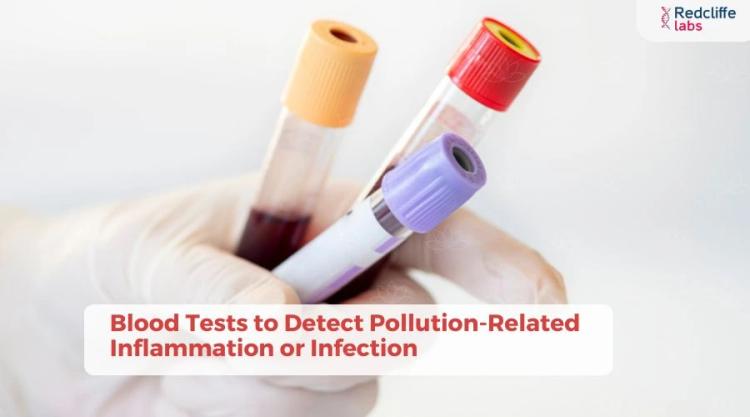Fungal infections of the skin: symptoms, causes, and treatment

Medically Reviewed By
Dr Divya Rohra
Written By Prekshi Garg
on Jun 29, 2022
Last Edit Made By Prekshi Garg
on Feb 26, 2025

As humans, we are always surrounded by thousands (if not millions) of different species of microorganisms, fungi being one of them. While there are millions of known species of fungi, only around 300 of them are responsible for causing skin infections in humans, with symptoms such as rashes, redness, and irritation (sometimes discoloration of the skin too).
Dealing with fungal infections of the skin can be painful and uncomfortable and affect one’s quality of life. If not all, a few types of fungal infections are contagious, resulting in further complications.
In this article we will explore more about Fungal infections of the skin, the potent causes, symptoms, and treatment options.
What is a Fungal Skin Infection?
Our skin is the biggest organ in the body that contributes to various physiological functions. It also acts as the first line of defense against infections, trauma, injury, and impacts.
As we mentioned before, we co-exist with fungi throughout our day-to-day lives. They are present just about everywhere in the environment, even though we can’t see some of them with our naked eyes. Fungi need very particular temperatures and living conditions to multiply and thrive on the host’s skin.
Typically, they multiply in moist and warm temperatures, which is why most fungal skin infections are noted in the curves and crevices in the body, like the groin, feet, folds of the skin, etc.
Even though we say that fungal infections are prevalent, they don’t result in anything fatal. However, you need to be wary of the symptoms and not take them for granted. The last thing you want to do is “wait it out” and have the infection get worse over time.
What are the types of Fungal Skin Infection?
Fungal infections are typically spread via direct contact with a contaminated surface or an already infected person. If you have highly sensitive skin that is prone to infections, you are likely to contract it fast.
Although most people regard most skin infections as a fungal skin infection, there are a few types depending on the vector causing the infection and the kind of symptoms notable in the patient.
Some of the most common types of fungal skin infection include:
Ringworm (Tinea corporis)
If there’s one fungal skin infection type that everyone knows about and has suffered from at least once in their lives, it has to be ringworm. It is a widespread and highly infectious skin infection that most commonly affects the torso and limbs.
The reason why this fungal vector is called so is due to its ring-like appearance. The edges of the ring-like infection are spotted with redness and blisters with roughness to it. The infection spreads very quickly if correct treatment isn’t administered on time.
Since the infection isn’t very serious or fatal, it can be treated with over-the-counter anti-fungal ointments. However, you do need to take notice of the symptoms at an early stage to prevent further spread to the other parts of the body.
Athlete’s Foot (Tinea pedis)
Athlete’s foot is a type of ringworm that is typically contained in the foot region of the patient. You will often find the redness, rashes, and itching happening between the fingers on your feet, especially around the toes.
The condition is very uncomfortable and leads to itching, pain, redness, and even inflammation in some cases. If left untreated, the infection will rapidly spread to other parts of the skin, leading to complications of cracked or blistering on the skin, which can be very painful.
Tinea pedis can often take a turn for the worse and transform into tinea manuum, a type of fungal skin infection that affects the nails and groin region.
Jock Itch (Tinea cruris)
A prevalent type of skin fungal infection in men, Jock itch, affects the groin or thigh region of the affected patient. It is generally caused due to excessive sweating, poor hygiene, and excessive folds around the thighs and groin region.
Most men experience the symptoms of redness and itching, which tend to get worse after a workout session or after riding a bicycle or bike. It looks like a ringworm with slightly darker edges and a red center. If you notice these around the folds of your skin, don’t take them for granted. With excess sweat deposition and lack of personal hygiene, the infection can worsen for the worse.
Scalp Ringworm (Tinea capitis)
Next most common infection is ringworm infection on the scalp. This is again due to excess sweat accumulation and is very common in children rather than adults. The condition often leads to complications of itching, swelling, and redness that get worse over time.
It has a slower spreading rate but will eventually spread if the treatments aren’t administered on time. Since it is common in babies, anti-fungal shampoos are often the saving grace.
Tinea versicolor
This is a unique type of fungal infection caused by the overgrowth of Malassezia on the skin. The strange factor about this fungus is that it stays on our skin 90% of the time. It is in that 10% that it starts proliferating at an exponentially higher rate and leads to skin infections.
Patients will notice slightly discolored, oval patches all over the skin, resulting in flaking or itching on the skin.
The worst thing about this type of fungal skin infection is the recurrence. Even after a round of treatment and complete recovery, you are more likely to notice it make a comeback later.
Cutaneous candidiasis
While men predominantly suffer from Jock Itch, Cutaneous candidiasis is common in women. It is caused by Candida fungi, which causes the infection when there is an overgrowth of the fungus on the skin.
Like most other fungi, even this requires a warm and moist environment to thrive and multiply. So, you are most likely going to notice it causes the infection around the breasts or even the folds of the groin. It is common in babies who wear diapers.
Onychomycosis (Tinea unguium)
Last on the list of types of fungal skin infections is Onychomycosis. This one affects the nails and is quite a rare type of fungal infection. You will notice this infection in the toenails more since they are covered with socks and shoes.
Patients with this type of fungal skin infection are more likely to experience brittle nails, yellowing of the nails, thickened nails, etc.
Who is most at Risk of Developing Fungal Skin Infection?
Fungal skin infections can more or less affect anyone. However, certain risk factors make people more susceptible to the infection. Some of these risk factors include:
- The weakened or compromised immune system
- Take a prescription of antibiotics over a prolonged period
- Overweight or obese
- Have type-1 or type-2 diabetes
- Side-effects from a skincare product
- Incontinence
- Excessive sweating
- Lack of personal hygiene
- Pregnancy
- Coming in contact with items from an infected person
- Wearing tight-fitted clothes and shoes
- Accidentally coming in contact with animals carrying the infection
Sometimes, even a healthy person can unknowingly develop fungal infections from an infected person or the environment.
What Causes Fungal Skin Infection?
If the name wasn’t a giveaway, every kind of fungal skin infection is caused by a type of fungus. Sometimes, the infection spreads from an already infected person. Sometimes, the fungal infection causes an overgrowth of the fungus on the skin.
Since fungal infections are highly communicable, we recommend not sharing personal hygiene items like towels, clothes, bedsheets, etc.
Even if there is nothing wrong, you can never be too safe with your choices. Given how unpleasant fungal infections are, precaution against the possible causes is the safest way to keep your well-being in check.
What are the Symptoms of Fungal Skin Infection?
The fungal infection symptoms depend on the type. However, some common ground symptoms are standard for every fungal infection, including:
- Redness
- Itching and irritation on the skin
- Flaky skin
- Swollen bumps with blisters
- Scaly skin
- Inflammation
You might experience a few of these symptoms, or you might end up experiencing them all. Getting treatment on time is thus highly crucial for a quicker recovery.
How is Fungal Skin Infection Diagnosed?
If you know about the symptoms, the chances are that you will be able to self-diagnose the infection at home. However, we’d recommend seeing a doctor get a more informed diagnosis and correct treatment options.
Typically, your doctor will start with the symptoms. If the infection is on a visible part of the body like the arms, legs, or scalp, they might look at it. Some doctors might even take scrapings from the site of the infection and run them under a microscope to assess the contributing cause.
Your doctor might need a fungal culture test if the infection spreads fast and often recurs after initial recovery. This assesses the type of fungus causing the infection to get the patient on a more targeted treatment regime.
How is Fungal Skin Infection Treated?
Following a diagnosis and identifying the type of fungal skin infection, your doctor will start with ointments or pills, depending on the severity of the condition. Some of the most standard fungal infection treatment options include:
- Antifungal creams or ointments
- Antifungal dusting powder
- Pills
- Sprays and shampoos
Initially, if you are pretty sure that the symptoms are of fungal infection, you can start the treatment with an over-the-counter antifungal treatment. If the symptoms don’t get better over time, you might need to consult a dermatologist to get the issue checked.
How to Prevent Fungal Skin Infections?
As everyone highlights, “Prevention is Better than Cure.” The same applies to Fungal Skin infections too. Given how uncomfortable and painful the symptoms are, adhering to the preventive measures is your safest bet.
Following are some of the prevention tips you can keep in check:
- Practice optimal personal hygiene, including showering, using soap, keeping the skin dry, etc.
- Avoid sharing personal items like bedding, towels, clothes, etc.
- Wear loose-fitting clothes if you tend to sweat a lot.
- Dry your skin thoroughly after a shower or bath.
- If your feet sweat, stick to wearing sandals and flip-flops.
- Practice hygiene in common areas like gyms, train stations, etc.
- Avoid coming in contact with animals that could carry fungal infections.
There’s not much that you have to do out of the norm to prevent fungal skin infections. Just ensure that you are prioritizing good hygiene for a healthier life.
Frequently Asked Questions
-
What happens if fungal infection is left untreated?
Initially, fungal infections aren’t life-threatening or fatal. However, if you don’t prioritize treatment and leave it to cure by itself, the infection will spread to other parts of the skin and can prove fatal.
-
How do I know if my rash is fungal?
The easiest way to detect if you have a fungal skin infection is by checking the symptoms. Fungal infections generally leave redness, rashes, and painful bumps on the skin.
-
How long can fungal infections last?
A fungal infection can cure itself within 1-4 weeks with appropriate care and treatment. The duration depends on the effectiveness of the treatment and the personal hygiene rules the patient is following.
Conclusion
Fungal skin infections are a lot more common than you anticipate. They are not fatal and can be cured with a few treatment options. Getting proper and on-time treatment is crucial to overcome the risks of discomfort and irritation with the transient spread all over the body. The OTC treatment options are usually excellent and work in recovery. Just ensure that you seek medical help if the symptoms don’t get better over time.
Leave a comment
1 Comments
Kim
Oct 27, 2022 at 10:20 AM.
Good post. I learn something totally new and challenging on sites I stumbleupon every day. It's always useful to read content from other writers and practice something from their sites. Also visit my page <a href="http://magneticequator.ru/shop/975113" rel="nofollow ugc">Amoxiline</a>



